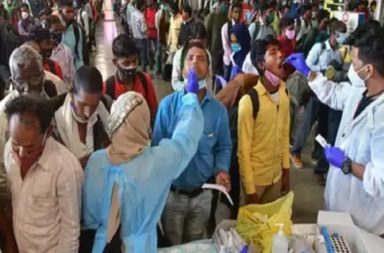The World Health Organization, UNICEF, and partners said there are about 2 million stillbirths every year, mostly in the developing world, according to the first-ever global estimates published recently. The U.N. health agency said that last year three of every four stillbirths occurred in sub-Saharan Africa or Southern Asia.
The first-ever joint global estimates also point out that stillbirths remain a challenge for high income countries, where a mother’s level of education is one of the greatest drivers of inequity, and ethnic minorities may lack access to sufficient quality health care. A pandemic-induced 50 per cent reduction in health services, could cause nearly 200,000 additional stillbirths over a 12-month period in 117 low and middle income countries, according to modeling done for the report by the Johns Hopkins Bloomberg School of Public Health.
Muhammad Ali Pate, Global Director for Health, Nutrition and Population at the World Bank, and Director of the Global Financing Facility for Women, Children and Adolescents, spelled out: “COVID-19 has triggered a devastating secondary health crisis for women, children and adolescents due to disruptions in life-saving health services”.
Some 0.34 million of the 1.9 million stillbirths globally in 2019 were in India, making it the country with the largest such burden, according to the first joint estimates released by a number of United Nations agencies October 8, 2020. India, along with five other countries — Pakistan, Nigeria, the Democratic Republic of the Congo, China and Ethiopia — accounted for nearly half of all stillbirths in the world, according to the report. Stillbirths have not declined as rapidly as maternal and newborn mortality, despite progress being made since 2000. If current trends continue, an additional 19 million stillbirths will take place before 2030. This would result in an immense and unjust strain on women, families and society.
However, the study maintains that with sound policy, programmes and investment, progress is possible. “The tragedy of stillbirth shows how vital it is to reinforce and maintain essential health services, and how critical it is to increase investment in nurses and midwives”, the WHO chief upheld. Because pregnant women need continued access to quality care, throughout their pregnancy and during childbirth, Dr. Pate stressed, “we are supporting countries in strengthening their health systems to prevent stillbirths and ensure that every pregnant woman can access quality health care services”.
Overall, very few women were receiving timely and high-quality care to prevent stillbirths even before the pandemic began, the report pointed out, citing a Lancet study. The disrupted health systems post-pandemic added to the crisis that already existed. The UNICEF, WHO, the World Bank Group and the Population Division of the United Nations Department of Economic and Social Affairs were among the agencies who produced the report.





